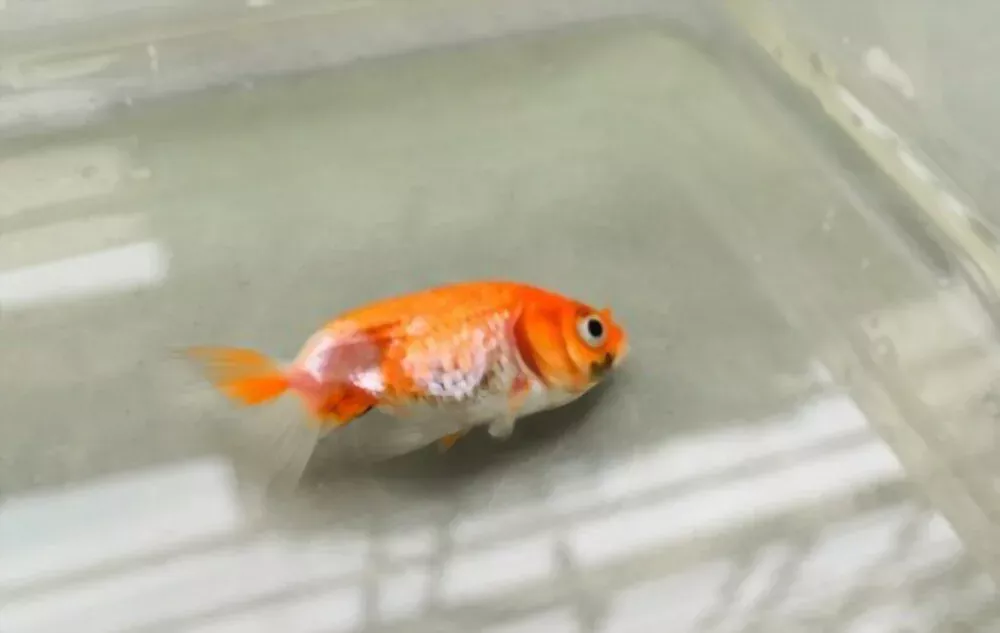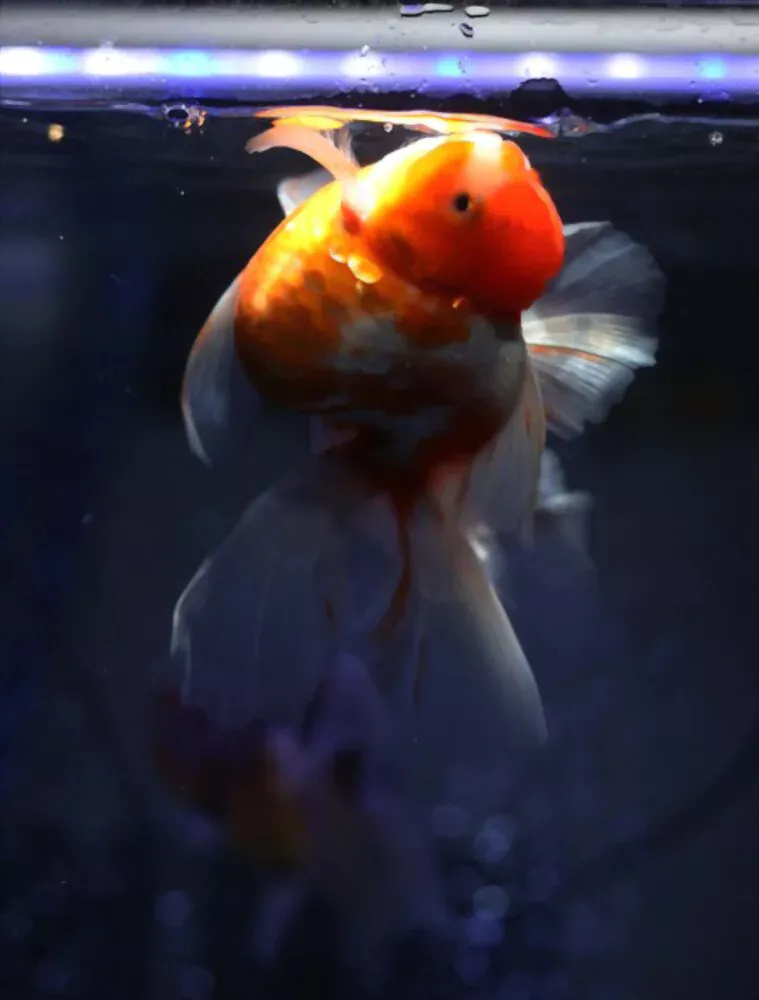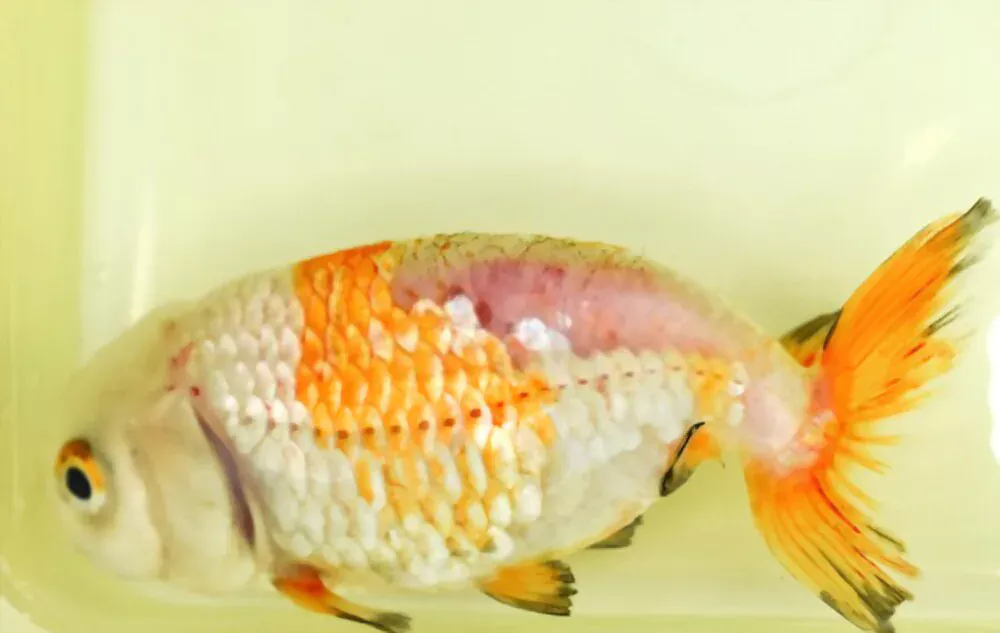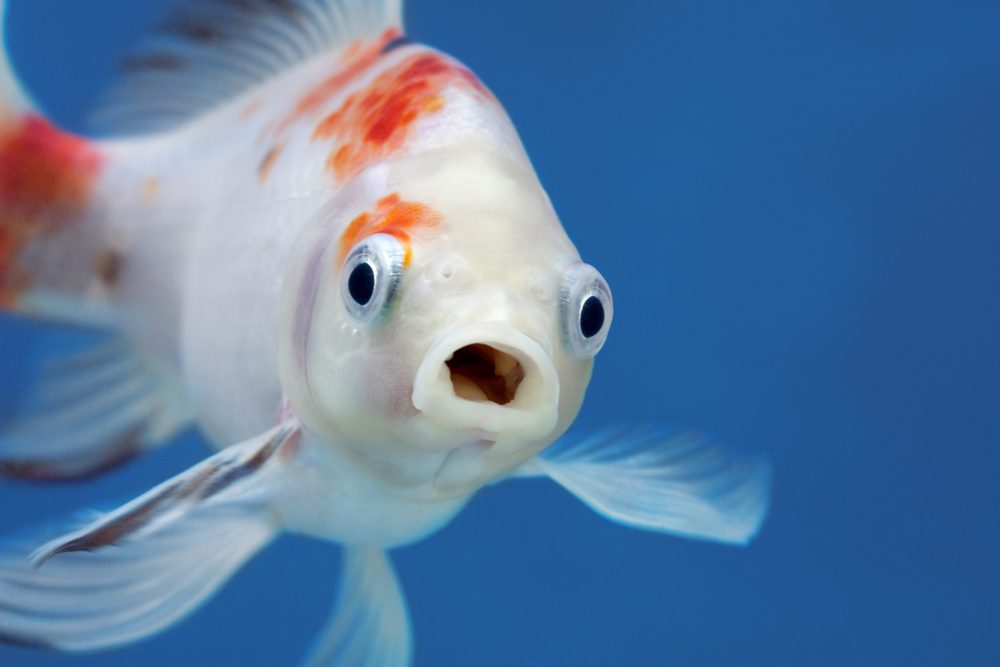We’ve all had goldfish just die unexpectedly, and we don’t really know what happened. Some might say it’s because they are so small. Others might say it’s because they stay in a bowl instead of a tank. And then there are people who will swear up and down that goldfish poison the water. Whatever the reason is, this guide will explain to you why do goldfish die so fast and what you can do about it.
Why Do Goldfish Die So Fast?
There can be very many reasons why goldfish die, but here we will discuss the most obvious ones. So let’s get started:
1- Sudden Water Changes
Goldfish are sensitive to rapid water changes. This means that if you perform excessive water changes, the chances of your goldfish dying increase.
When you change the water in your aquarium, it can be a stressful experience for your fish. When you add new water to the tank, this can cause changes in temperature and pH levels which may be harmful to your fish. The sudden change in environment can also cause ammonia spikes which can lead to death as well as stress on their immune systems.
The best way to avoid this is by slowly changing the water over time so that your fish has time to adjust to their new surroundings before they are exposed to any other changes or stresses such as feeding times or cleaning schedules.
2- Poor Health
Buying a goldfish from a pet store can be risky because many of them are sick when they arrive. Unfortunately, most fish in pet stores are kept under poor conditions that aren’t good for them or for us: dirty tanks full of dead fish and other waste products like food remnants. This makes it hard for us to tell whether our new friend is healthy or not.
When you’re buying a goldfish at a pet store, don’t just look at it—really look at it! If the fish shows any signs of sickness, like dull coloring or excessive mucus buildup in the gills, don’t buy it. Even if you think those symptoms aren’t serious enough to keep away from your new pet, they could be signs of more serious problems that will only get worse over time.
3- Low Oxygen Levels

Low Oxygen Levels in the tank can be another reason why your goldfish die really quickly. There can be many potential causes of low oxygen levels in the fish tank.
There are many potential causes of low oxygen levels in fish tanks. One of the most common is simply poor maintenance. if you don’t clean your tank, or if you add too many fish, it can cause a buildup of toxins that will ultimately kill them.
Another possible cause is insufficient filtration. If you have a fish tank and don’t have a filter on it, this could be why your goldfish are dying really quickly. If you do have a filter, make sure that it’s working properly and that the water flow is sufficient for the size of your tank.
Finally, low oxygen levels can also be caused by overfeeding your fish or putting too much food in their bowl at once. Overfeeding will cause waste products to build up in the water and will eventually lead to low oxygen levels and death if they’re not removed.
This is why it’s important to keep an eye on the conditions of your aquarium or pond—you might not realize what’s going on until it’s too late! If you have a pond and are worried about low oxygen levels, try adding a fountain for aeration; if you have an aquarium and are concerned about low oxygen levels, make sure you’re changing out the water regularly and replacing filters as needed.
4- Chlorine
Chlorine is an element that’s used in many household products and even food preservation processes. it’s used to purify drinking water, treat sewage, disinfect medical supplies and equipment, kill bacteria on produce before it reaches market shelves, and more. It also happens to be pretty dangerous for your goldfish!
If you use tap water in your fish tank then this might be the biggest reason why there is chlorine buildup in your tank. When you are using tap water to fill up the tank, then it is obvious that there will be chlorine in the water. And when chlorine mixes with ammonia and other toxins in the water, it creates a dangerous chemical called chloramine.
There are different other alternatives to tap water if you want to keep using tap water in your tank. One alternative is to let it sit out for 24 hours before putting it into your tank. Another alternative is to use a dechlorinating product like Tetra AquaSafe Plus or API Stress Coat that will remove the chlorine from the water before adding it to your tank.
5- Due To Diseases

Sometimes when your goldfish dies, it’s not because you did something wrong, it could just be that they were sick and you didn’t know it.
There are many diseases that can affect goldfish, and if left untreated, they can be fatal. So what should you look out for? Here are some of the most common diseases that attack goldfish:
1- Swim Bladder Disease: This occurs when fluid collects in the fish’s swim bladder, making it hard for them to swim properly.
2- Fin Rot: Fin rot is an infection on a goldfish’s fins caused by poor water quality or injuries from other fish or objects in your tank. It can also be caused by poor nutrition or stress brought on by changes in temperature or lighting conditions.
3- Dropsy: Dropsy is another infection that causes fluid to collect around your pet’s organs (usually its internal organs). This often causes bloating as well as swelling around its eyes and face due to water retention inside its body cavity.
6- Incompatible Tank Mates
If you have a goldfish, you know that it’s important to keep it in the right environment. One of the most important things to consider when caring for a goldfish is its tank mates. Otherwise, they may suffer from stress or even death. Goldfish are particularly susceptible to this problem when they’re young, so it’s important to avoid any species that might be incompatible with them.
There are many species that are incompatible with goldfish, so avoid them! Some examples include:
- Sharks
- Catfish
- Cichlids (Tilapia)
7- Overcrowding
Ammonium is a byproduct of fish waste and decaying food. You may have heard that ammonium can be dangerous for your fish’s health, but what does that really mean?
It’s true that high levels of ammonium can be fatal to your goldfish, but it’s not always as simple as just adding more nitrogen-removing media to the aquarium. Ammonium levels in your tank can rise due to overcrowding and a lack of filtration, which means you may need to upgrade your filtration system or change the way you care for your fish.
To make sure that your fish are getting enough oxygen and don’t end up suffering from ammonia poisoning, try keeping them in a large aquarium with ample filtration. This will help keep their waste under control so you don’t have to worry about it building up and ruining the water quality!
8- Changes In Water Chemistry
When you change the water of your goldfish tank, it’s important to keep water chemistry in mind. Changes in water chemistry can have a drastic impact on the health of your fish. The most common problem is pH imbalance, but you should also be aware of other chemical levels like nitrates, ammonia, chlorine, and chloramine.
When you do water changes make sure you monitor the pH and chemical levels of the water. If it’s outside of the recommended range for your fish, consider treating it with a pH adjuster until it returns to normal levels.
A good rule of thumb is to change about 10% of your tank’s water every week. But make sure that the temperature doesn’t change too drastically when doing this, as this could also cause problems with goldfish health.
9- Improper Diet
The problem with this is that they tend to digest their food very quickly, so you’ll have to make sure they get fed often—and in small amounts. You should also make sure you’re providing them with a balanced diet, which means making sure there’s protein and carbohydrates every day.
One of the most important things to remember about goldfish is that they’re omnivores, which means they will eat both plant and animal matter.
It’s also important that you don’t overfeed your goldfish! As we mentioned before, their digestive systems work faster than ours do, so if you give them too much food at once it could cause problems for them later on down the road.
10- Injuries or Accidents

Goldfish are pretty resilient little fish, but like any other living creature, they can get injured. Sometimes, goldfish injuries are the result of fighting between fish or simply an accident.
If you notice that your goldfish has a wound or a cut, it is important that you take the time to treat the injury properly so that it doesn’t become infected or spread bacteria to other fish in your tank.
How Do Goldfish Act When They Are Dying?

When a goldfish is about to die, you will notice some signs.
1- A fish that is dying or ready to die will have its fins spread out, which is different from a healthy goldfish whose fins are always close to its body.
2- Another common sign is the fish swimming around with its head facing the bottom of the tank and its tail facing up.
3- If your goldfish has been dying for a while and hasn’t eaten, it will start to look thinner.
4- The goldfish’s scales could start to change colors. Scales turning white can be a sign of age as well as stress. Darker colors are more likely to be evidence of illness or advanced age.
5- Goldfish sometimes develop skin lesions, which may be hard to see without closely examining their bodies.
6- Dead fish float at the surface of your tank and are unable to swim down into their normal resting places.
7- If your fish is getting weaker, it will stay close to the bottom of the tank and not move much, or only move when it really needs oxygen or food.
Frequently Asked Questions (FAQs)
Why Do Carnival Goldfish Die So Fast?
Carnival Goldfish need a constant water temperature of 21-24 degrees Celsius (70-75 degrees Fahrenheit) to survive. The reason they die so fast is that they are not used to tropical temperatures and the sudden change kills them.
The best way to keep Carnival Goldfish alive is by putting them in an aquarium with a heater and mimicking the conditions in their natural habitat. You can also buy a special aquarium for Carnival Goldfish that has a built-in heater and other features suited for them such as plants, hiding spots, etc.
Why Do Comet Goldfish Die So Fast?
Comets are known for being more sensitive to water quality than other types of goldfish, so if you are keeping them in an aquarium that is not filtered properly or that has stagnant water, they may not survive long.
If your tank has been set up for a while, there may be nitrates building up in it making it harder for your fish to breathe. Some people use chemical treatments like Tetra Safe Start or API Stress Coat to help reduce the nitrate levels in their tanks, but this can also be dangerous if overdone (it is meant as a short-term solution).
Final Thoughts
So hopefully this was helpful when it comes to keeping your goldfish alive as long as possible. As you can tell, there are an unbelievable amount of reasons why they die so fast, so fix these issues before it’s too late!

